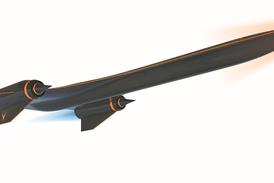Airborne collision-avoidance systems are ‘inappropriate' for self-separation or sequencing says safety bulletin
Eurocontrol is warning pilots against using airborne collision-avoidance systems (ACAS) for aircraft navigation and self-separation, pointing out that the practice can be dangerous under certain circumstances.
In an ACAS safety bulletin, the organisation says such systems only provide partial information, based on a moving reference, and have limited accuracy. While the equipment is valuable for situational awareness and as a last resort for aircraft safety, according to Eurocontrol ACAS programme manager John Law, it is not designed for self-separation or sequencing.
"Using it for these purposes is inappropriate and could be hazardous," he says. "Experience has shown that, in some cases, flightcrew are tempted to make their own traffic assessment based on the [ACAS] traffic display information and to manoeuvre in anticipation of air traffic control instructions."
Eurocontrol says ACAS lacks sufficient speed-vector information, while the equipment can provide unreliable bearing measurements with error margins potentially ranging from 5° to 30°. There are also risks that ACAS might not display all aircraft in the vicinity and pilots could misidentify a target.
ACAS's moving reference-frame gives a different impression of a traffic situation compared with the image on air traffic control radar, and pilots can easily misinterpret the data, leading aircrew to believe that the aircraft is facing a potential conflict when none exists.
As an example, Eurocontrol cites the situation of a Boeing 767 and a Boeing MD-80 travelling at the same altitude, with the MD-80 preparing to cross in front of the 767 from left to right. Although the air-traffic controller could see that the 767 would pass safely behind the MD-80, the ACAS display on the 767 appeared to show the other aircraft almost directly in front, on an opposite track. This generated an intuitive reaction in the pilot to initiate a right turn. Rather than resolve the apparent conflict, however, the turn reduced the separation between the two aircraft to only 3.7km (2nm) and triggered a traffic advisory.
Another incident highlighted by Eurocontrol involved a Boeing 747 pilot questioning a controller's instruction to turn left because the ACAS display appeared to indicate that such a turn would create a conflict with a crossing McDonnell Douglas DC-10. The controller's instruction was actually designed to prevent an imminent conflict between the two jets, and the delay in execution led to a serious loss of separation; the aircraft closed to a minimum distance of 3km.
Pilots have been known to cause sequencing problems, Eurocontrol adds, by monitoring the ACAS display and incorrectly adjusting airspeed in approach streams to increase distance from other aircraft.
The organisation emphasises that ACAS is designed solely to issue alerts and resolve an identified conflict, and insists that aircrew must not use ACAS for self-separation.
DAVID KAMINSKI-MORROW/LONDON
Source: Flight International























